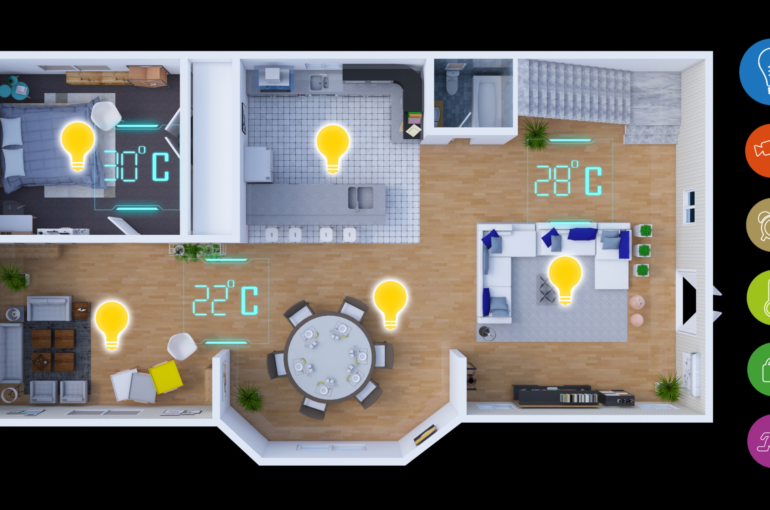How to Automate Home Lights

Home automation is the next best thing for new and renovated homes. In addition, a house’s automated lighting system makes it stylish and contributes to the ambience. Of course, the mood in a house relies on many other aspects, but the lighting is primal.
Lighting in a house makes you comfortable and secure. Moreover, there are interior and exterior automated lighting options. Home light automation also ensures your activities flow smoothly. For instance, the system switches on the lights at nightfall and switches off exterior lights at sunrise.
So, how do you turn your traditional house lights into smart lights?
Automated Home Light Options
There are a few options when developing the perfect automated lighting system for your home. However, here are two of the most common choices made by homeowners:
Using Fixed Wall Switches
Yes, this sounds old and outdated, but companies can simultaneously use fixed wall switches and smart controls. This option is great, especially for visitors and new homeowners.
During installation, the lighting technicians replace the bulb with a Wi-Fi enabled one. Still, they can keep the traditional light bulb and change the switches to smart.
The No Switch Design
This option is perfect if your aesthetic or home design does not accommodate wall switches. Instead, technicians install wireless switches (battery operated).
Since there is no wiring, light control happens using mobile phone applications or sensors. A disadvantage to this lighting design is getting visitors used to the lighting system. However, it’s nothing complicated.
What You Need in a Home Automation System
A home automation system incorporates hardware, communication and electronic interfaces. All these components bring together different household devices via the internet.
These household devices also have sensors that use a Wi-Fi system. Therefore, controlling the lights from a phone or internet-enabled device is easy.
Home automation works on these three levels:
1. Monitoring
Automated home lighting systems should accommodate ways to monitor when away from the house or inside the home. For example, a homeowner needs to switch on the exterior lights late at night. They can do so with the touch of a button.
2.Control
Control plays a significant role in an automated home lighting system. Sometimes, the lights are too bright and need to be turned down. It should be possible to do so from your connected devices.
3.Automation
Most homeowners prefer this feature because it is pre-programmed. If you want your lights to go on immediately you get to the door, automated lights can make it happen. Usually, the lighting system works alongside motion detectors and time schedules.
Of importance is getting a qualified company to do the installations. Total light control utilizes natural and interior lighting to give the perfect balance. After all, setting the mood in a room needs the best lighting, and automated home lights help achieve that.



